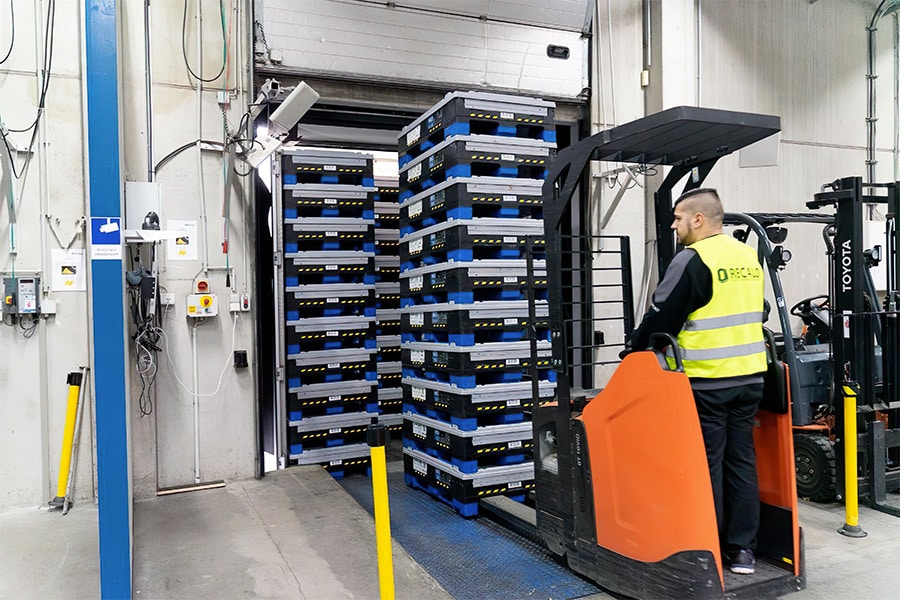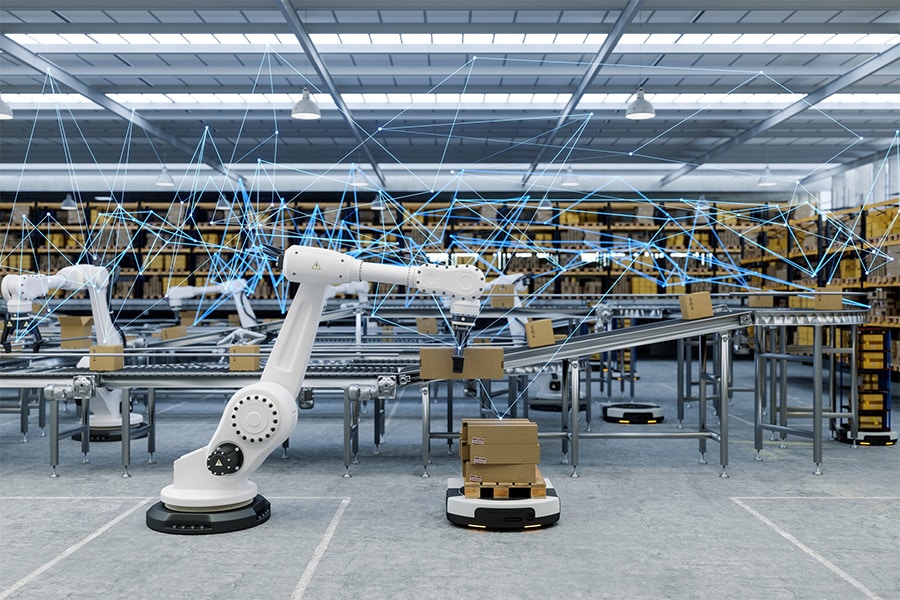
Report webinar 'Automation of warehouse operations: the road to maximum efficiency' (LogiVille / POM West Flanders)
On March 21, 2025 LogiVille and POM West Flanders organized a webinar on warehouse operations automation and the path to maximum efficiency. Industry experts shared insights and practical examples on how companies can optimize their intralogistics through innovative technologies and strategic decisions.
The evolution to Intralogistics Automation 4.0
Simon Popelier, innovation manager at Logflow, kicked off the webinar with a presentation on the pitfalls and opportunities of logistics automation. He warned against the pitfall of the Kaizen methodology, which limits companies to small improvements. Instead, he advocated a Kakushin approach, a fundamental restructuring of processes to achieve real efficiency gains.
Another common mistake is arbitrarily choosing new technologies without an overarching plan. Automation should be a means to business objectives, not an end in itself. Companies must ensure flexibility and scalability in their warehouses and move to Total Logistics Maintenance. The role of warehouse workers is changing dramatically, with the "co-warehouse supervisor" taking center stage: a position that combines collaboration and digital skills.
In addition, Simon Popelier stressed the importance of integration and collaboration within the organization. Logistics automation impacts different departments and must be coordinated with IT, HR and operational teams. A successful implementation requires a clear vision and long-term planning, with companies also having to take into account changing legislation around automation and digital security.


Automation in the Benelux: innovation versus reality
Thomas Vercammen, logistics automation and innovation manager at Toyota Material Handling, emphasized the need for a structured approach to automation. His presentation focused on cost savings, safety, sustainability and the need to respond to labor shortages. Demographic changes make it difficult to attract suitable personnel, making automation a crucial role in the future of the industry.
Toyota Material Handling sees a hybrid future in which manual, semi-automated and fully automated processes coexist. Sales of Automated Mobile Robots (AMRs) and Automated Guided Vehicles (AGVs) are growing, as is the use of smart trucks that increase efficiency with smart technologies.
Three components play a key role in intralogistics automation: design, software and hardware. Warehouse design must be flexible and future-proof, taking into account legal responsibilities and safety requirements. Strong software integration is essential to efficiently control logistics vehicles and optimize warehouse management. Finally, companies need to think carefully about what hardware they deploy, and how they integrate it with existing processes.
A key focus of automation is the collaboration between humans and machines. Thomas Vercammen emphasized that automation is not just about replacing workers with robots, but also about creating a more efficient workflow in which people can focus on value-added tasks. Companies that respond smartly to this will strengthen their competitive position and offer their employees a safer and more pleasant working environment.
In addition, sustainability is a driving factor in the logistics sector. Automation can help reduce energy consumption and waste streams. Consider, for example, smart route optimization for vehicles or energy-efficient warehouse lighting. Companies should also consider circular solutions and the reuse of materials within their supply chain.


Case study: the new distribution center of Cebeo
Wim Van Brabant, warehouse manager at Cebeo, presented a concrete case study. Cebeo, part of Sonepar, is Belgium's market leader in electrical materials and decided to build a new central distribution center (CDC) in the Walloon town of Blandain (near Tournai).
The new CDC covers 42,000 square meters and is 18 meters high. It is a semi-automated warehouse with four storage zones: Long & Bulky, Cable, Smallgoods and Pallet Area. There is also a consolidation zone to efficiently process orders and ship them to 53 branches. Sustainability played a major role in the design: the building is BREEAM-certified, requires no fossil fuels and features 7,000 solar panels and an advanced water reuse system.
Automation within Cebeo is supported by technology from KNAPP and an integrated ERP/WMS/WCS system. The case illustrates how smart automation can contribute to increased productivity, a flexible logistics structure and more sustainable operations.
In addition to efficiency and sustainability, Wim Van Brabant stressed the importance of scalability. The new distribution center was designed with future growth in mind, so the warehouse can be further automated over time without major structural changes. This is a crucial lesson for other companies considering automation: invest in a system that can grow with your business.
The role of employees within Cebeo also evolved with automation. Investments were made in education and training to ensure that employees could make the best use of new technologies. Cooperation between man and machine resulted in smoother operations and improved customer satisfaction.

Summary
This webinar by LogiVille and POM West Flanders offered participants valuable insights into how automation can transform warehouse operations. The key to success lies in a thoughtful strategy where technology is not implemented as an end in itself, but as an integral part of a broader business plan. Flexibility, scalability and digital integration form the basis for a more efficient and future-oriented logistics sector.
Automation not only offers economic benefits, but also contributes to a safer and more sustainable work environment. By combining smart technologies with a long-term strategic vision, you can better arm your company to meet economic and societal challenges.



